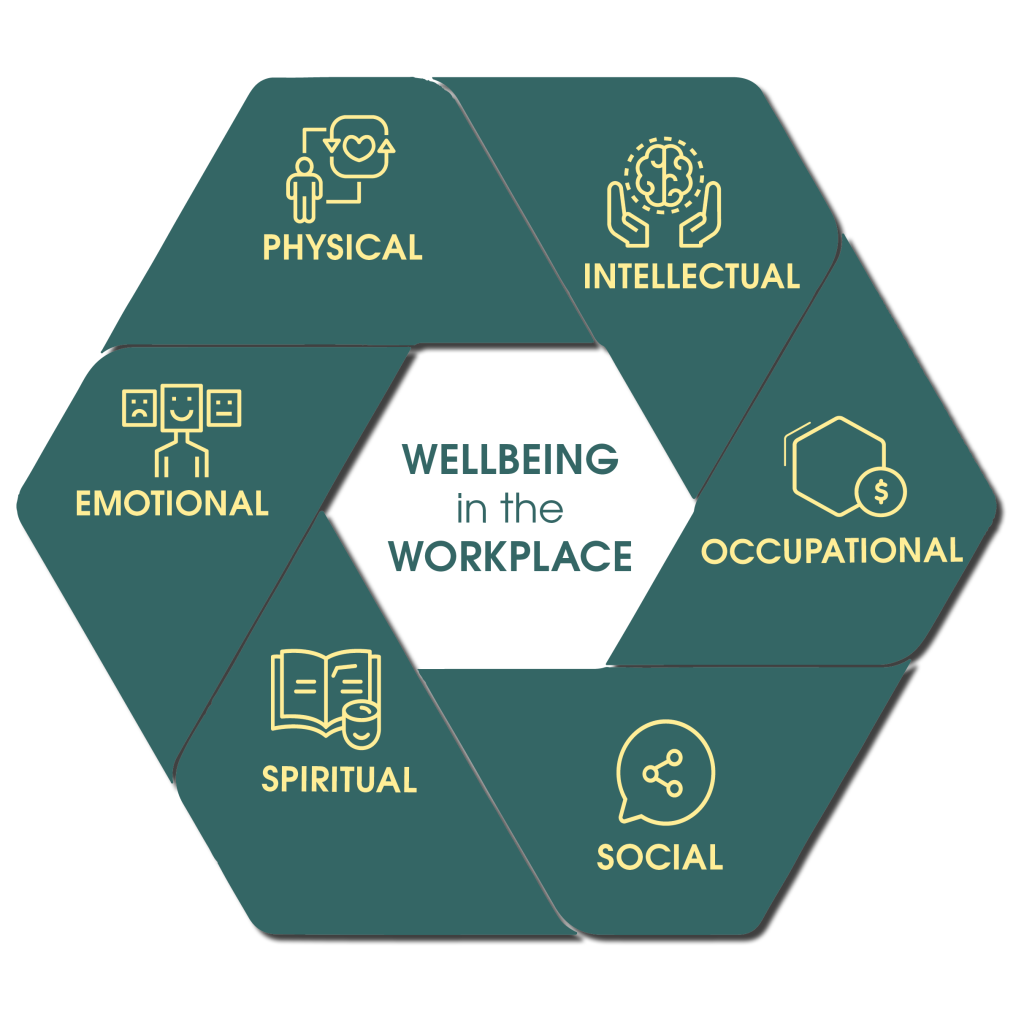
From Burned Out to Balanced: Designing Workplaces for Well-Being and Productivity
Feeling stressed, overwhelmed, and burned out seems to have become an all-too-common...

As HR manager, you have probably considered programs and initiatives promoting healthy employee behaviors and lifestyles, such as exercise and nutrition programs, stress management workshops, and work-life balance programs. Indeed, these are all fantastic operational strategies. Yet, there is a prerequisite layer that is commonly overlooked – that is the work environment where employees work. Let’s dive into the six dimensions of wellbeing and explore how to create a supportive work environment that addresses them.
Wellbeing is a multi-faceted concept, and the National Wellness Institute (NWI) defines wellness as an active process of becoming aware of and making choices toward a more successful existence. The Wellness Wheel provides a holistic approach to employee well-being by considering all the dimensions and how they are interconnected. According to the NWI, wellness addresses six key dimensions:
1/ Occupational wellbeing: The individual’s satisfaction and engagement with their work, as well as the alignment of their values with their work.
2/ Physical wellbeing:The individual’s physical health and fitness, including nutrition, exercise, and sleep.
3/ Social wellbeing: The individual’s relationships and connections with others, including their sense of belonging and social support.
4/ Intellectual wellbeing: The individual’s cognitive functioning, including their ability to learn, problem-solve, and think critically.
5/Emotional wellbeing: The individual’s emotional wellbeing includes their ability to manage stress, express emotions, and maintain a positive mood.
6/Spiritual wellbeing: The individual’s sense of purpose, meaning, and connection to something greater than themselves.

Now, here are some design considerations that can help enhance employee wellbeing in the workplace:
By providing ergonomic furniture and desking, you can help employees maintain proper posture and reduce physical strain, leading to improved physical wellbeing.
Adding nature and greenery in the office can improve air quality, boost mood, and reduce stress levels, positively impacting emotional and physical wellbeing.
Creating quiet zones for concentration allows employees to focus on their work and take breaks from the distractions of an open-plan office, enhancing their intellectual wellbeing.
Encouraging a sense of community and collaboration through communal spaces and amenities provided in work lounges can improve social wellbeing by fostering a sense of belonging and connection among employees.
Allowing for flexibility and customization in the workplace, such as adjustable workspaces and personal storage, can help employees feel in control of their work environment and improve their occupational wellbeing.
Incorporating natural light and fresh air in the workplace can improve air quality and contribute to a healthier, more positive work environment, benefiting employee wellbeing.
By considering these design considerations in your workplace, you can support your employee wellness initiatives and create a work environment that enhances the overall wellbeing of your employees.